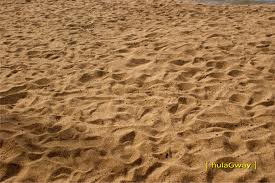Mathematical modeling to monitor physiochemical interaction with E. coli transport in homogeneous fine sand on the application of colloid filtration method in port harcourt, Niger delta of Nigeria
Keywords:
modeling physiochemical interaction E.coli transport and homogeneous fine sandAbstract
Excessive usage of different types of chemical constituents through the activities of man has caused a lot of pollution in soil and water environment. The deltaic environment are not left behind, in fact it is an area to be taken as the worst condition in research of groundwater pollution transport in developing nation. This has reflected on high concentration of different types of pollution sources influenced by the activities of man as industrialized environment. Formation characteristics that reflect the deltaic nature of the soil has been expressed in geologic history to be predominant with alluvium deposition with high yield rate of groundwater known as Benin formation. Such condition has generated degradation of water quality in the study area. In line with this conceptual framework mathematical model were developed expressing these variables in the system that influence the migration of E.coli under the influence of physiochemical deposition at various formations. The model will definitely monitor the behaviour of E.coli transport under the influence of these chemical properties in soil and water environment.References
Glatstein, F.F.M., 2010. D.A. Long term hydraulic conductivity of compacted soils permeated with landfill
leachates Applied Clay Science 49 187–193
Low, C.S., 2002. Appropriate Microbial Indicator Tests for Drinking Water in enveloping Countries and Assessment
of Ceramic Water Filters Submitted to the Department of Civil and Environmental Engineering in Partial
Fulfillment of the Requirements for the Degree of Master of Engineering in Civil and Environmental
Engineering at the Massachusetts Institute of Technology
Metcalf, Eddy, 1991. Wastewater Engineering: Treatment, Disposal and Reuse. McGraw Hill Book Co., Singapore.
Madigan, M.T., Martinko, J.M., Parker, J., 2000. Brock Biology of Microorganisms, 9th Edition. Prentice Hall, NJ.
World Health Organization (WHO) 1993a. Guidelines for Drinking Water Quality, 2nd ed. Vol. 1 -
Recommendations. Geneva
World Health Organization (WHO) 1996. Guidelines for Drinking Water Quality, 2nd ed. Vol. 2 – Health criteria and
other supporting information. Geneva.
Kjeldsen, P., Barlaz, M.A., Rooker, A.P., Baun, A., Ledin, A., Christensen, T.H., 2002. Present and long-term
composition of MSW landfill leachates: a review. Critical Reviews in Environment Science and Technology 32
(4), 297–336.
Guyonnet, D., Gaucher, E., Gaboriau, H., Pons, C.-H., Clinard, C., Norotte, V., Didier, G., 2005. Geosynthetic clay
liner interaction with leachates: correlation between permeability, microstructure, and surface chemistry.
Journal of Geotechnical and Geoenvironmental Engineering 131 (6), 740–749
Touze-Foltz, N., Duquennoi, C., Gaget, E., 2006. Hydraulic and mechanical behavior of GCLs in contact with
leachates as part of a composite liner. Geotextiles and Geomembranes 24, 188–197.
Petrov, R., Rowe, R., 1997. Geosynthetic Clay Liner (GCL) — chemical compatibility by hydraulic conductivity
testing and factors impacting its performance. Canadian Geotechnical Journal 34, 863–885
Kayabali, K., 1997. Engineering aspects of a novel landfill liner material: bentoniteamended natural zeolite.
Engineering Geology 46 (2), 105–114.
Goldman, L.J., Greenfield, L.I., Damle, A.S., Kingsbury, G.L., Northeim, C.M., Truesdale, R.S., 1998. Design,
Construction, and Evaluation of Clay Liners for Waste Management Facilities. USEPA,Washington D.C.
EPA/530/SW- 9/007F.
VanGulck, J.F., Rowe, R.K., Rittmann, B.E., Cooke, A.J., 2003. Predicting biogeochemical calcium precipitation in
landfill leachate collection systems. Biodegradation 14 (5), 331–346.
Foged, N., Baumann, J., 1999. Clay membrane made of natural high plasticity clay: leachate migration due to
advection and diffusion. Engineering Geology 54, 129–137
Daniel, D.E., Benson, C.H., 1990. Water content-density criteria for compacted soil liners. Journal of Geotechnical
Engineering 116 (12), 1811–1830.
Benson, C.H., Trast, J.M., 1995. Hydraulic conductivity of thirteen compacted clays. Clays and Clay Minerals 43 (6),
–681.
Mitchell, J.K., Hooper, R., Campanella, R., 1965. Permeability of compacted clay. Journal of Soil Mechanics and
Foundation Division 91 (4), 41–65.
Mitchell, J.K., Jaber, M., 1990. Factors controlling the long-term properties of clay liners. Waste containment
systems: construction, regulation and performance. ASCE.
Geotechnical Special Publication 26, 84–105.
Gleason, M.H., Daniel, D.E., Eykholt, G.R., 1997. Calcium and sodium Bentonite for hydraulic containment
applications. Journal of Geotechnical and Geoenvironmental Engineering 123 (5), 438–445.
Sivapullaiah, P.V., Sridharan, A., Stalin, V.K., 2000. Hydraulic conductivity of bentonite– sand mixtures. Canadian
Geotechnical Journal 37 (2), 406–413.
Schmitz, R.M., 2006. Can the diffuse double layer theory describe changes in hydraulic conductivity of compacted
clay? Geotechnical and Geological Engineering 24, 1835–1844.

Published
How to Cite
Issue
Section
License
Copyright (c) 2013 Solomon Ndubuisi Eluozo, B. B. Afiibor

This work is licensed under a Creative Commons Attribution-NonCommercial-NoDerivatives 4.0 International License.



